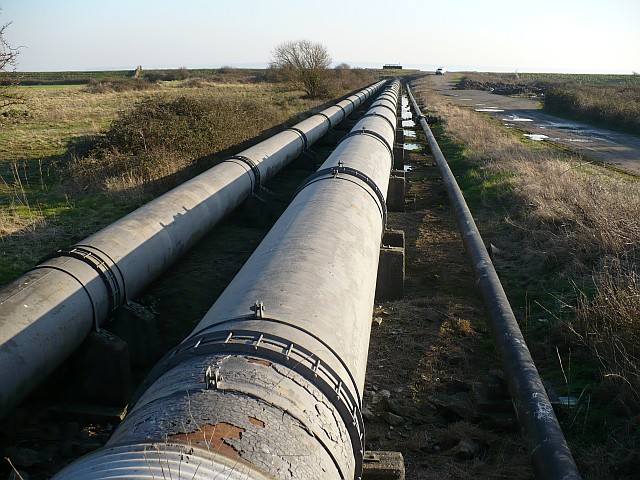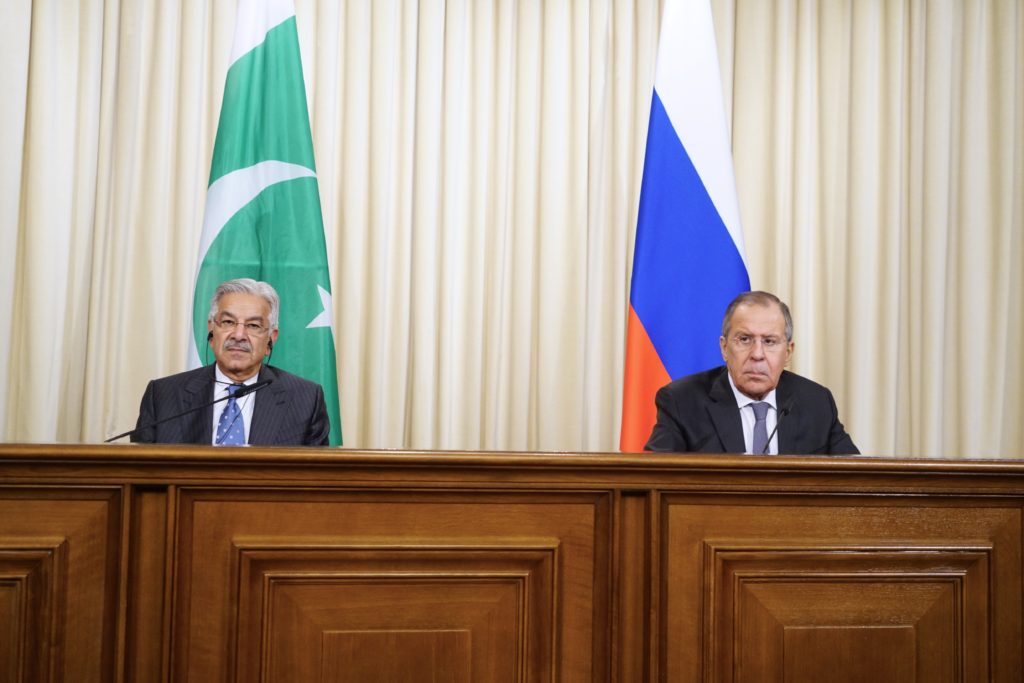
At the start of the summer, Pakistan and Russia signed an intergovernmental agreement for the implementation of the Pakistan Stream Gas Pipeline Project (PSGP). The pipeline—set to the most substantial economic engagement project between Pakistan and Russia since the 1970s—also underscores the two countries’ mutual desire to enhance bilateral cooperation and, if moved forward with successfully, would be a powerful symbol for Pakistan-Russia ties. In recent years, Pakistan and Russia have made significant progress in improving the bilateral relationship through cooperation in the political, economic, energy, and defense sectors. This latest agreement breathes new life into a pipeline project that has languished since 2015.
One major reason for the delay was Pakistan’s demand for a sanctions-free structure due to apprehension over possible U.S. sanctions on Russian firms such as Rostec. Under the PSGP—previously the North-South pipeline which has now been renamed and restructured to mitigate the risk of sanctions on Russian companies—Pakistan is set to acquire a supply infrastructure with an estimated annual gas capacity of 12.4 billion cubic meters. The pipeline will run between Karachi and Kasur in Pakistan for transmission of Liquefied Natural Gas (LNG) and act as a significant channel for Pakistan’s industrial growth along with commercial and domestic use. Beyond the positive implications for Pakistan’s energy sector, the implementation of the PSGP is an important opportunity for Pakistan to bolster its geoeconomics foreign policy, strengthen its bilateral strategic ties with Russia, as well as diversify its partners amidst the U.S. pivot to the Indo-Pacific.
Pakistan-Russia Relations: Overview and Challenges
While the PSGP is a step forward, Pakistan and Russia share a complicated history that has complicated their cooperation. In the 1950s, Pakistan joined the U.S.-led security pacts as part of its efforts to secure its economic and defense interests against India—placing Islamabad in Moscow’s rival camp. In the 1960s, however, the United States’ military aid to India after the latter’s border war with China gnawed at Pakistan and the weakening of U.S.-Pakistan relations opened an avenue for Islamabad and Moscow to build rapport, including Soviet mediation after the 1965 war, visits by Ayub Khan and Zulfikar Ali Bhutto to Moscow, and the support of Pakistan Steel Mills in the 1970s. However, if Pakistan-USSR ties had begun to thaw this was quickly reversed the following decade with Islamabad’s alliance with Washington again to thwart the Soviet invasion of Afghanistan. This led to the Soviet Union’s defeat in and exit from Afghanistan in 1989, the same year that marked the start of the collapse of the Soviet Union and the end of the Cold War.
Beyond the positive implications for Pakistan’s energy sector, the implementation of the PSGP is an important opportunity for Pakistan to bolster its geoeconomics foreign policy, strengthen its bilateral strategic ties with Russia, as well as diversify its partners amidst the U.S. pivot to the Indo-Pacific.
After the collapse of the Soviet Union into 15 independent states, one may have expected a new era in the Russia-Pakistan relations. While there were some initial efforts in this regard, Islamabad’s support of the Taliban and later recognition of the Taliban government in Kabul discomfited Russia, which was concerned about the spillover of terrorism and militant extremism into its former satellite states in Central Asia. Pakistan’s post-9/11 partnership with the United States also did little to help the relationship. However, the Indo-U.S. nuclear deal in 2005 perhaps reinforced Islamabad’s disillusionment vis-à-vis Washington. The Russian foreign minister Sergey Lavrov and the Prime Minister Mikhail Fradkov visited the Pakistani capital in 2006 and 2007, respectively, and created different working groups for trade, energy, and scientific cooperation. Counterterrorism and anti-drug trafficking efforts were other areas of mutual cooperation, in part under the Shanghai Cooperation Organization, a China-led regional grouping that has focused on counterterrorism and extremism.
Beyond these diplomatic exchanges and occasional joint military exercises, little of substance came out of the mutual interactions owing to three key challenges. First, India and Russia share a close defense industrial relationship with Russia as the second biggest exporter of arms to India, including Moscow’s longstanding strategic assistance to India’s nuclear and missile program. Second, Russia’s diplomatic position at the international forums, significantly at the United Nations Security Council (UNSC), has mostly been at odds with Pakistan’s interests, including vetoes on Kashmir-related resolutions and disfavoring Pakistan’s stance on the Financial Action Task Force (FATF). Third, Pakistan’s financial crunch makes it difficult to purchase high-tech defense weaponry or development materials from Russia. Pakistan inclination towards Western markets that may limit trade activities and economic potential with Russia.

PSGP: A Sign of Better Relations Ahead
However, in recent years both states have shown greater resolve to overcome these challenges and boost economic ties. The recent encouraging indicators have been the convergence of security interests in Afghanistan and both states’ quest for diverse strategic and economic partners. In April 2021, the Russian foreign minister Sergei Lavrov visited Islamabad for the first visit in nine years, and spoke of cooperation on counterterrorism, defense, and vaccines. There have additionally been signs of some defense cooperation. While still developing, Russian provision of military equipment was raised during Lavrov’s 2021 visit. This follows Pakistan’s receptions of four Mi-35 heavy attack helicopters from Russia for USD $153 million in 2017. In addition more frequent phone calls between heads of states, high-level diplomatic visits, and joint military drills have added substance to the relationship.
Strong ties with Russia could also supplement Pakistan’s efforts to diversify partners and support its more geoeconomic focused foreign policy.
This backdrop increases the prospect of the USD $2.5 billion PSGP agreement. If finalized and maintained, the deal would also be of key symbolic significance as its success would be a strong sign of confidence in the relationship and potential for cooperation in other areas if interest. When completed in 2024, the pipeline would bey set to provide gas supplies to various cities on the Karachi-Kasur route and critical for meeting Pakistan’s dire energy needs. While there is still a long road ahead for getting the pipeline off the ground, the broader warming of ties between the two countries suggests there may be more avenues for dialogue and exchange to address upcoming challenges in implementation.
Strong ties with Russia could also supplement Pakistan’s efforts to diversify partners and support its more geoeconomic focused foreign policy. With the United States withdrawal from Afghanistan, its continued focus inward, and an Asia policy driven by countering a rising China through groupings like the Quad and new cooperation with the United Kingdom and Australia (AUKUS), Islamabad may expect little attention from Washington. Pakistan’s waning role in U.S. foreign policy and security partnerships is likely to contribute to Islamabad working instead to promote its economic and geographic significance for the major powers, including the United States, China, Russia, Britain, Japan, and others.
Keeping up the Momentum
Coupled with other developments such as arms sales and counterterrorism cooperation in Afghanistan, the PSGP agreement represents one of the building blocks of growing Pakistan-Russia ties. Going forward, Pakistan will need to ensure that the PSGP gets off the ground, overcoming stumbling blocks of political wrangling that could hold up the project. Islamabad may also need to look past Russia’s strategic parntership with India, or risk its public displeasure on Russia-India ties straining the progress of the Russia-Pakistan relationship.
Islamabad would also be wise to keep exploring and working on avenues of cooperation with the United States, other western powers, and countries in the Asia-Pacific to diversify its ties. Finally, Pakistan’s improvement on the domestic economic front will go a long way in advancing trade and defense ties with major powers.
***
Image 1: Wikimedia Commons


